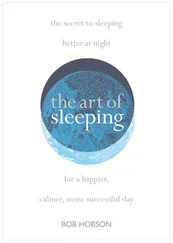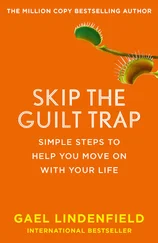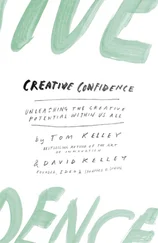By now, you might be thinking – hang on a minute, all this play sounds well and good for a teacher doing their job, but how exactly does this fit in with parenting? Family life is just too busy for all that play-planning and all those ‘Areas of Learning and Development’. I know, I know. This was my thinking too. When I became a parent of two young children – only seventeen months apart – and then went back to work, albeit part-time, I also wondered how on earth I could integrate all this great and important play, in which I strongly believed and promoted professionally, into our everyday family life. I remember thinking that, sometimes, it would just be easiest to hand over my phone to my toddler when on a journey to the supermarket, for example. And what about the TV? How handy was that for keeping them still and quiet while I dashed off those vital emails, or loaded the washing machine?
It was then that I decided to change the conversation just as Don Draper from Mad Men would say. Instead of trying to fit all this play into our busy life, I decided to flip it on its head and instead try to see our busy life as a series of opportunities for play. Play was so important to me professionally, I just knew I could make it work personally. In fact, using this approach transformed my experience of parenting two young children into a more joyful, fulfilling and memorable experience than I ever could have imagined.
Using play didn’t mean that I suddenly became the in-house entertainer, and it didn’t mean I played with my children all day long. No, I just wanted to get my children involved and learning, thinking and growing, helping and cooperating as a matter of course throughout our normal busy day – and I realised that I could do this all under a kind of banner of play.
So, for example, loading the washing machine became a playful activity that my toddler just loved . Sometimes, he would help with a fun socks-sorting game and sometimes we’d sing a silly washing machine song as we worked. (There will be much more singing in this book, so be prepared.) And if I needed to make a phone call or try to get his baby sister to sleep, for example, instead of putting on the TV, I might surprise him with a little tote bag containing a few unexpected things – just some small toys he’d forgotten about. As I experimented with more and more ways to weave play into our everyday life I began to realise that some of these ideas actually freed me up a fair bit, because once I’d set them off with something irresistible to play with, my children would often find their flow and they became really rather good at playing independently. Some of the ideas actually saved my sanity – like when I arranged their clothes into silly positions on the floor in the mornings. When they were laid out like that, there was never again an argument about what to wear, and when to get dressed. I was so pleased because those arguments had been proper two-year-old ones, with rage and tears and stamping – you know the kind . . . Now they just laughed, said ‘silly Mummy’, and got dressed.
Parenting with play really paid off for me. I realised how much easier it was to motivate my children, and get good behaviour from them, when I applied playful positivity to the situation, rather than by trying to be all authoritative and go down the battle-of-wills route. My feisty and smart two-year-old got that I was being playful, of course, but because she, like all children, had this innate desire to play, she was more than happy to comply – to help tidy up, or clean her teeth or whatever – because it was all done in a fun and gentle, playful and mutually respectful way.
So this was me, beginning to find my feet as a parent, bringing my teaching experience to bear when I could, experimenting with different ways to make play shape our everyday. Some ways to play were time savers, some were sanity savers. Some were ideal for filling a bit of time, instead of putting on the TV, and some brought out top-notch creativity in my children or developed their independence. I discovered a sense of peace, purpose and fun in parenting despite hearing so many others with children of similar ages bemoaning the ‘terrible twos’, shouting at their kids, ignoring unwanted behaviour with a ‘boys will be boys’ comment or just going on and on about how hard it all was.
Yes, these are the messy years; yes, things get pretty hectic and, yes, sometimes there are tears and tantrums – but by identifying and implementing ways to parent with play I developed an approach to parenting that really worked for me. And it will work for you too.
Why 7 Ways to Play?
When I was asked to write about this approach to parenting I knew I had a fantastic opportunity to reveal the secret to a happier, calmer and more creative experience of parenting under-fives. And, of course, you’ve probably guessed that, put very simply, the secret is play ; play in all its glorious forms.
When I started analysing how I integrated play and playfulness into my family’s life I realised that there were, in fact, just seven different ways.
 Sometimes I would use play to enable me to complete the household chores.
Sometimes I would use play to enable me to complete the household chores.
 When I needed a minute to myself I would initiate play in super-quick time with a tempting toy or object.
When I needed a minute to myself I would initiate play in super-quick time with a tempting toy or object.
 Whenever we had more spare time, I would invitingly set out a few toys or objects they hadn’t played with for a while.
Whenever we had more spare time, I would invitingly set out a few toys or objects they hadn’t played with for a while.
 If we had a free afternoon, I would encourage my children to get creative and play in a messy way.
If we had a free afternoon, I would encourage my children to get creative and play in a messy way.
I always listened out for my children’s call-to-craft moments, and on these occasions I would use playful tactics to help them make things.
 I would try to make time every now and again to actually stay and play a game or two with them.
I would try to make time every now and again to actually stay and play a game or two with them.
I would use playful strategies to help keep my children’s behaviour on the right track at potential flash-point times of the day or in particularly challenging situations.
The aim of this book is to explain and offer lots and lots of examples of these seven ways of parenting with play to help you adopt this peaceful and positive approach.
In summary, the 7 Ways to Play are as follows:
 Chores: not bores Household chores will always need to be done; it’s about inviting your preschooler to ‘help’ you – or play alongside – while you tackle domestic tasks.
Chores: not bores Household chores will always need to be done; it’s about inviting your preschooler to ‘help’ you – or play alongside – while you tackle domestic tasks.
10-second set-ups This is perfect for when you need your children to play by themselves for a while; it’s about offering them a super-quick, irresistible stimulus to encourage a period of happy independent play while you get on with something else.
Invitations to play For this way to play you take just a few minutes to set up and demonstrate/model the activity before you step away and witness some wonderful open-ended play.
Invitations to create The idea of this is not what they make; it’s that they make – it’s all about the process – giving them the materials and opportunity to explore different media and to get creative without necessarily finishing a piece of art or craft.
Читать дальше

 Sometimes I would use play to enable me to complete the household chores.
Sometimes I would use play to enable me to complete the household chores. When I needed a minute to myself I would initiate play in super-quick time with a tempting toy or object.
When I needed a minute to myself I would initiate play in super-quick time with a tempting toy or object. Whenever we had more spare time, I would invitingly set out a few toys or objects they hadn’t played with for a while.
Whenever we had more spare time, I would invitingly set out a few toys or objects they hadn’t played with for a while. If we had a free afternoon, I would encourage my children to get creative and play in a messy way.
If we had a free afternoon, I would encourage my children to get creative and play in a messy way. I would try to make time every now and again to actually stay and play a game or two with them.
I would try to make time every now and again to actually stay and play a game or two with them.










